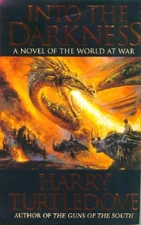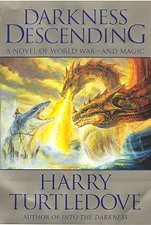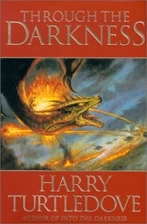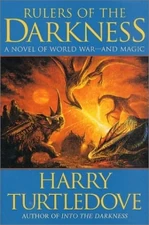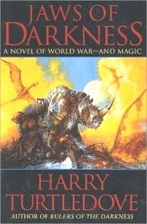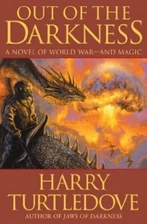The Kaunians were a racial/ethnic group on the continent of Derlavai. The dominant ethnic group of far eastern Derlavai, they were resented by peoples of Unkerlanter and especially Algarvic extraction, with whom they had a long and complex history of competition. During the Derlavaian War, anti-Kaunian racism had devastating effects upon the populations of Western Derlavai, most notably those in Forthweg. These Kaunians were used by Algarve for "Special Magecraft"--they were slaughtered en masse, and their life energy was converted into a terrible offensive weapon against Algarve's enemies.
History[]
The Kaunian Empire was a large state that existed some thousand years before the Six Years' War. It dominated eastern Derlavai and maintained a colony in present-day Lagoas. It ultimately collapsed, but left behind a legacy of culture, politics, and knowledge that formed the foundation of modern Derlavaian society. Their architecture was adopted by nearly all the kingdoms in the east of Derlavai. Physically, Kaunians were known for their blond hair and light complexion.
On the east coast of Derlavai, where ethnic Kaunians dominated, Kaunian culture was preserved in a number of local city-states, which eventually somewhat reunified into the kingdoms of Valmiera and Jelgava. The two kingdoms developed languages which were closely related to each other and each descends from classical Kaunian, and were known for blond populations. These kingdoms usually competed with Algarve; this combined with the fact that the ancestors of the Algarvians had waged war--in the end, successfully--against the Kaunian Empire led to a fair amount of mutual ethnic antagonism.
Farther west, there had been many Kaunian enclaves scattered throughout present-day Algarve. By the time of the prelude to the Derlavaian War, the descendants of these Kaunians were for the most part culturally indistinguishable from the Algarvian majority. They had Algarvic names rather than Kaunian ones, and enjoyed the same tastes in music and food.
Farther west still, in Forthweg, which had been on the westernmost fringe of the empire, the descendants of Kaunians made up about 10% of the population of the kingdom of Forthweg. They co-existed uneasily with the Forthwegian majority. They spoke a language which classical Kaunian far more closely than did Valmieran or Jelgavan, and tried the best they could to maintain the traditions of their imperial ancestors.
In the westernmost regions of Unkerlant, some small Kaunian enclaves existed, but only in negligible numbers. Many people in Lagoas had at least a partial Kaunian ancestry, but few self-identified as anything other than Lagoan.
Persecution of Kaunians during the Derlavaian War[]
During the course of the Derlavaian War, Algarvians forced Kaunians into concentrated areas of Forthwegian cities. As the Derlavaian War turned against Algarve, Kaunians were rounded up and taken to camps in Unkerlant, where they were killed and their life energy harvested. This energy was used to power a destructive spell which caused earthquakes and purple flames. Algarve used it to gain advantage against their Unkerlanter foes. It was rarely used on the eastern front, though one attack against the Kuusaman capital was fueled by Kaunian life-force.
Although Kaunians took various measures to protect themselves (most notably, a Kaunian woman named Vanai devised a spell which enabled Kaunians to take on the appearance of Forthwegians), by the end of the war, the number of Kaunians in Forthweg had been severely reduced.
Literary Comment[]
In the genocide they faced in Forthweg, Kaunians parallel Europe's Jews in our world, particularly their near-destruction during World War II. In some contexts, the Kaunian languge is a parallel to Yiddish.
Kaunian history also shares similarities to that of the Roman Empire, and of Latin Europe in the Medieval period. Their influence on modern Derlavai is similar to that of the Romans on modern Europe: the language of the ancient Kaunian Empire, classical Kaunian, is used as a language of scholarship throughout Derlavai, much as Latin was once used in Europe. The Valmieran and Jelgavan languages are derived from classical Kaunian, just as many of the languages of southern Europe are derived from Latin. Much of Kaunian art and architecture is found throughout the continent of Derlavai, again alluding to the wide range of Roman ruins in Europe.
Proper nouns in the Kaunian languages, for both places and people, are taken from our world's Balto-Slavic languages. Kaunas is the name of the second-largest city in Lithuania.
| |||||||||||||||||||
